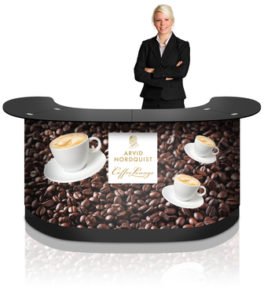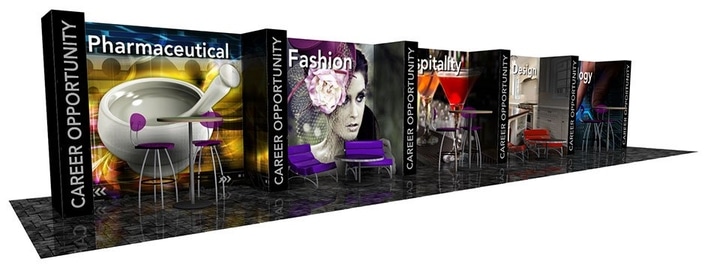How To Save Money When Working With Unions At Trade Shows
Unions at trade shows. The phrase brings up a number of memories and emotions for trade show exhibitors, not all of them positive. Love ‘em or hate ‘em, you can’t live without ‘em.
When working with unions at trade shows, you deal with different people, different management, and different jurisdictions from one show to another. Labor laws can be different, and can certainly be interpreted differently, from city to city. And the contracts you have to sign before anything gets done can be daunting and expensive.
But knowing a little about how the system works can make working with them less frustrating, confusing and costly.
There’s a long list of unions you may encounter at trade shows and each has its own responsibilities. Every one can be a potential minefield, if you’re not careful and well informed. Chances are, you won’t interact with all of them. But here are some of the unions you might find yourself working with:
– Audio/Visual Technicians (install TVs, sound systems, lighting, projectors, etc.)
– Carpenters (uncrate your exhibit, install and dismantle it)
– Carpet layers (install and remove floor covering)
– Decorators (assemble pipe-and-drape booths, hang fabrics, etc.)
– Electricians (anything having to do with completing electrical work)
– Material Handlers (bringing uncrated materials to your booth space)
– Machinists or Millwrights (move, assemble, install and dismantle machinery)
– Plumbers (install and connect air, water, waste and gas lines and tanks, as well as HVAC)
– Porters (empty wastebaskets and provide cleaning services, including vacuuming carpets)
– Riggers (hang signs above your booth, or move large equipment off pallets)
– Stage Hands (move props and mic stands, operate draperies, raise and lower scenery, etc.)
– Teamsters (freight handling, including loading and unloading of all trucks, handling of all machinery)
Not all convention centers have union contracts, or contracts with all these unions. So it pays to know a bit about the lay of the land before you get yourself in trouble.

The Expand podium case converts quickly to a counter, and can easily be setup by exhibitors themselves.
Can you do the work of a union laborer yourself? Technically, no. And it’s unwise to try to get away with it. Why? A union steward may find out and force you to pay the union person’s rate anyway. It’s simply unwise to try to get away with anything, because it’s easy to win a battle and lose a war.
Remember, you’re going to be working with unions to load up your exhibit when the show is over. If you get on their bad side, you won’t be at the top of the list of people they’re rushing to help when it’s time to pack up.
We’ve all heard of exhibitors whose crates were “accidentally” damaged by a forklift, or mistakenly shipped to Siberia, as a result of a perceived slight between an exhibitor and a union. Almost every exhibitor has a story about an unfortunate run-in with a union steward. I’ve gotten in trouble myself, by innocently plugging in an extension cord one time, and another time, by stepping onto a stool to adjust a sign.
If you do run into a problem, take it up with the floor managers. These are people employed by show management to “run interference” with the unions. If it gets particularly ugly, the union members will also contact their union steward. It rarely rises to this level. But it’s good to know how to deal with it correctly, rather than shouting at the union workers.
Here are some ways you can save money and hassles when working with unions on the show floor:
The booth itself
The build: You can start saving money during the design process by planning your exhibit to be easier to set up. Shop for a modular booth, that can be reconfigured, and one that is easy to set up.
You can also do things like installing graphics and drilling mounting holes prior to shipping the booth. These steps save time at the show, where time is money.
Booth set up: Plan for installation and dismantling during regular hours. You may have to stay a day after the show ends. But that could mean avoiding costly overtime and/or double time labor rates.
Drayage: If you can transport your exhibit to your space in one trip with a two-wheeled luggage cart, you’re probably OK in most exhibit halls. Don’t even try a furniture dolly or other four-wheeled cart.
I&D: If your exhibit is less than 100 square feet, or no larger than 10 feet high and eight feet wide, you may be allowed to do your own I&D (installation and dismantle).
Inside the booth
Electrical: In most convention centers, exhibitors can plug any equipment into an existing 120V outlet, if it’s 20 amps or less. (If there is an extension cord, or multiple connections, this may not be the case.)
Lighting: If installing display lighting doesn’t require a ladder or any special tools, you’ll probably be able to avoid working with union labor to do so.
Cabling: Attaching communication cables from one machine to another is generally allowed. The cables must be on top of your exhibit’s flooring.
Your own equipment: If it’s one of your company’s own products, you can test it, tune it or run it without union labor in most situations.
Cleaning your booth: You can vacuum the carpeting with your own vacuum, provided you’re a full-time employee of your company.
Whatever you do, don’t stand on a chair to do it, because it “magically” becomes a ladder at that point. And only union members can use ladders.
Working with unions is complicated, costly and sometimes even comical. But it’s the system we’re stuck with. And the more you know about how unions work, and which unions are involved at the show where you’re exhibiting, you’ll be better able to deal with them and get the job done. After all, that’s your job.
A well-designed exhibit can help you exhibit more efficiently and cost-effectively. The right exhibit can also help you attract more attendees and tell your story persuasively. American Image Displays can help you communicate with show attendees by creating a booth that makes you shine. We also offer accessories like lighting, shipping cases and literature racks that make exhibiting easier and more effective. To learn more, call (800) 677-3976 or email [email protected].
For more, check out how to separate what everyone else is doing or check our analysis of CEIR’s report.

